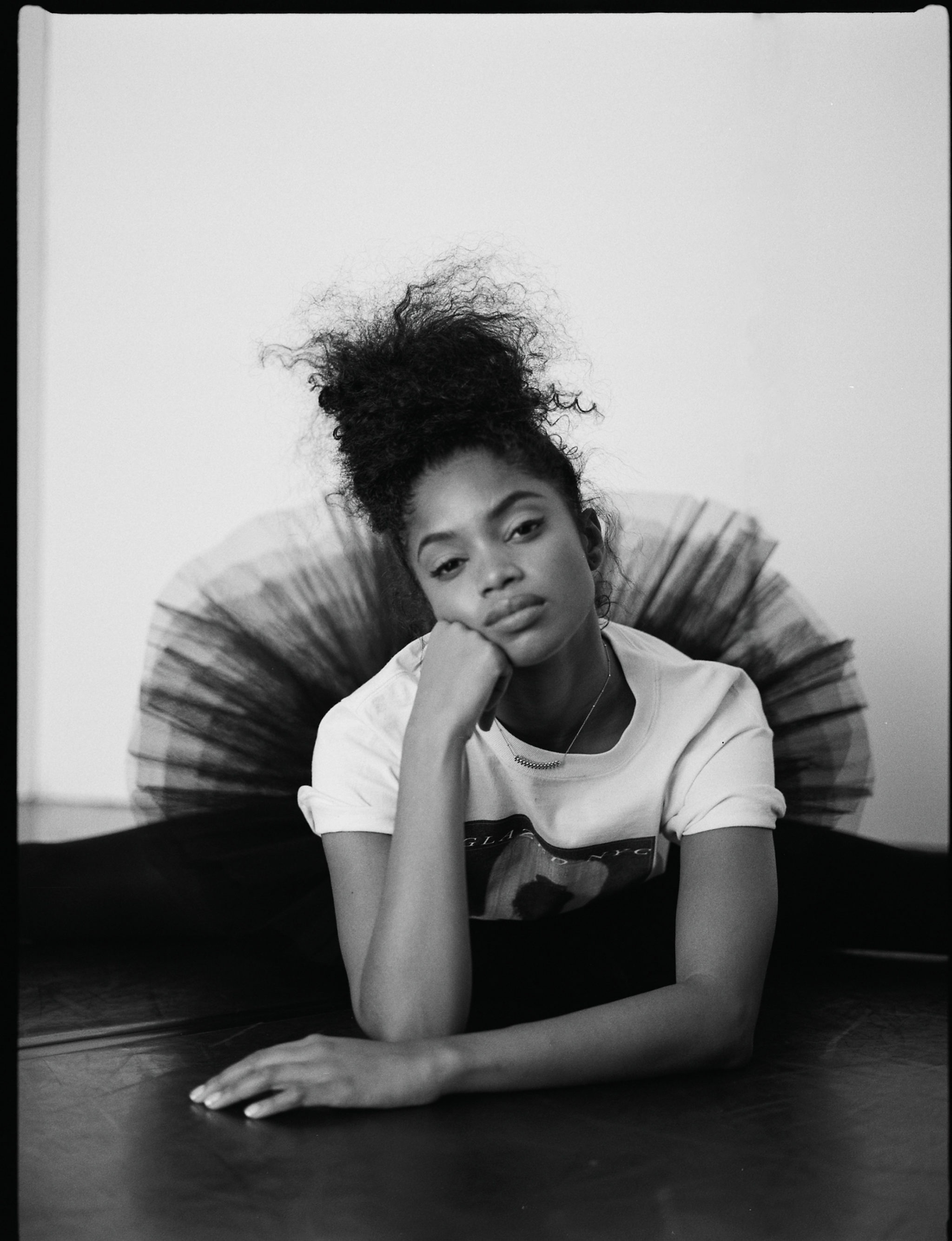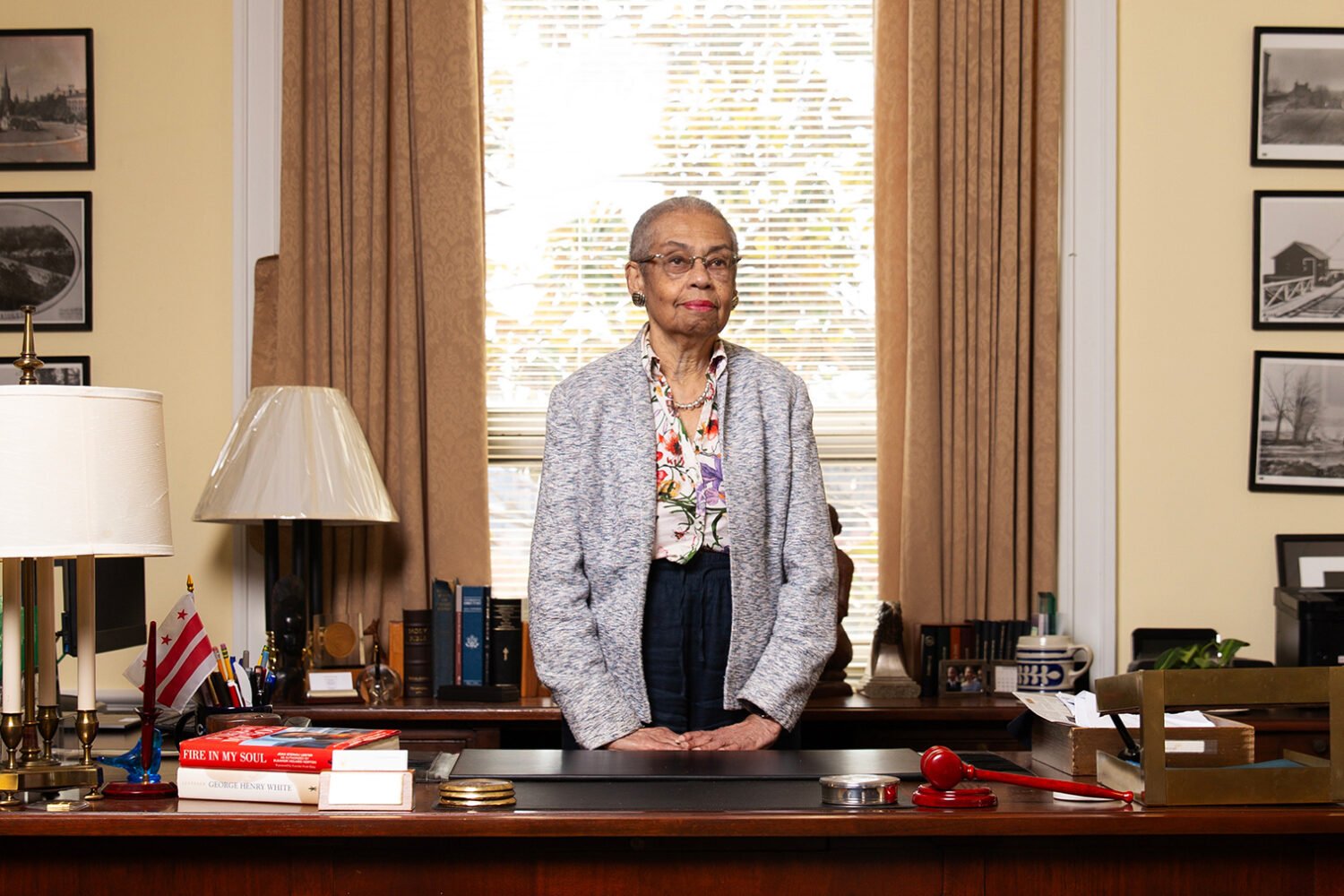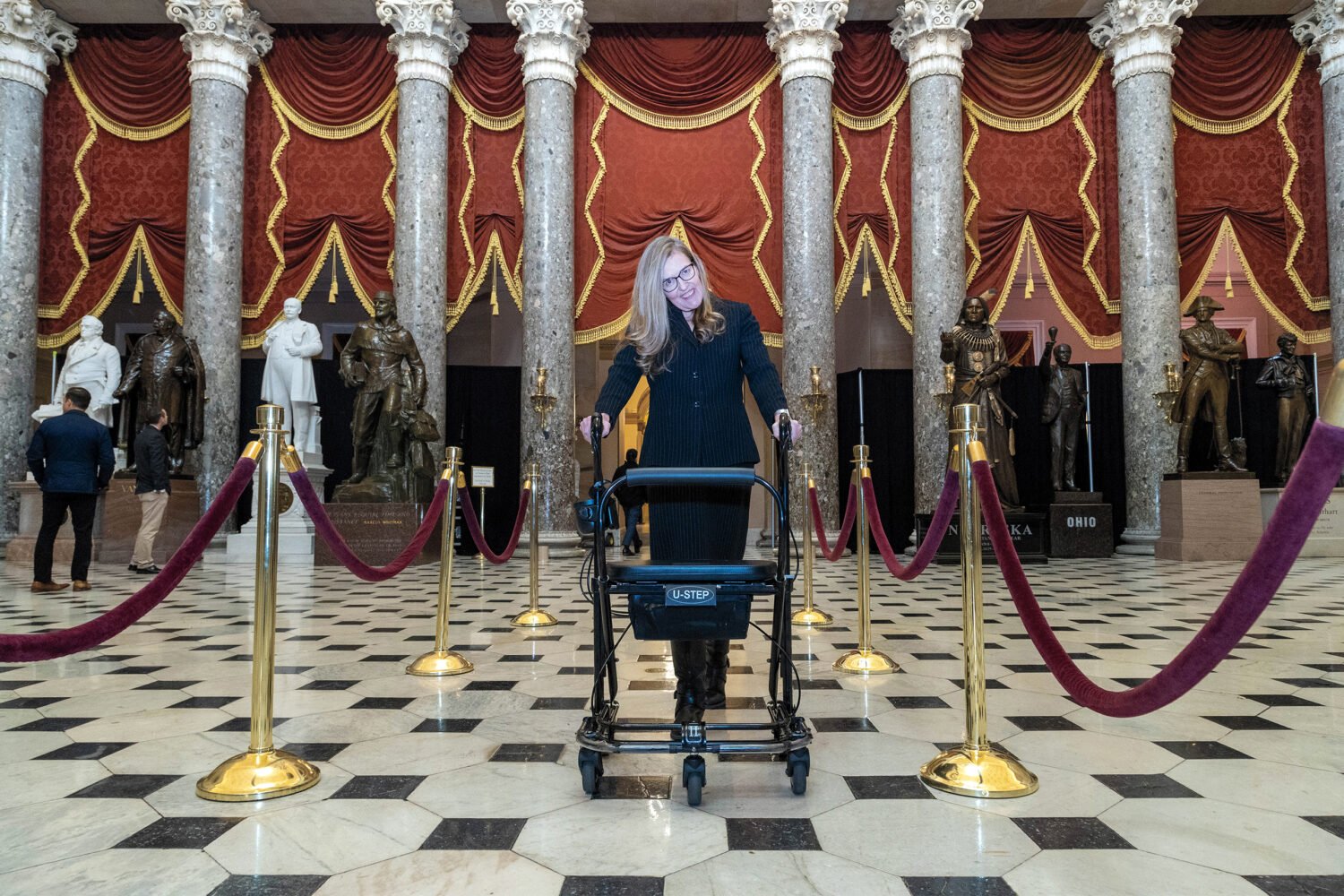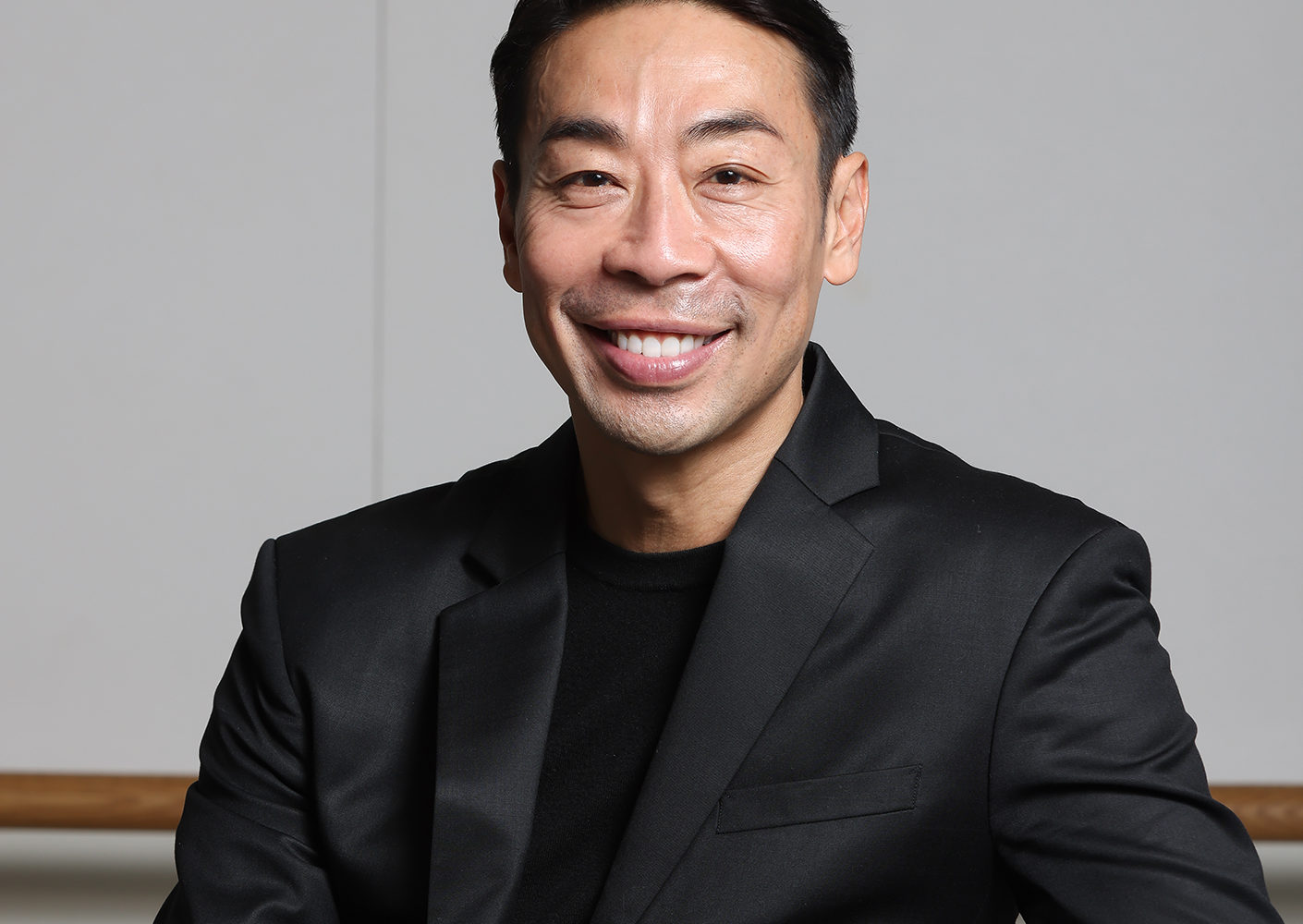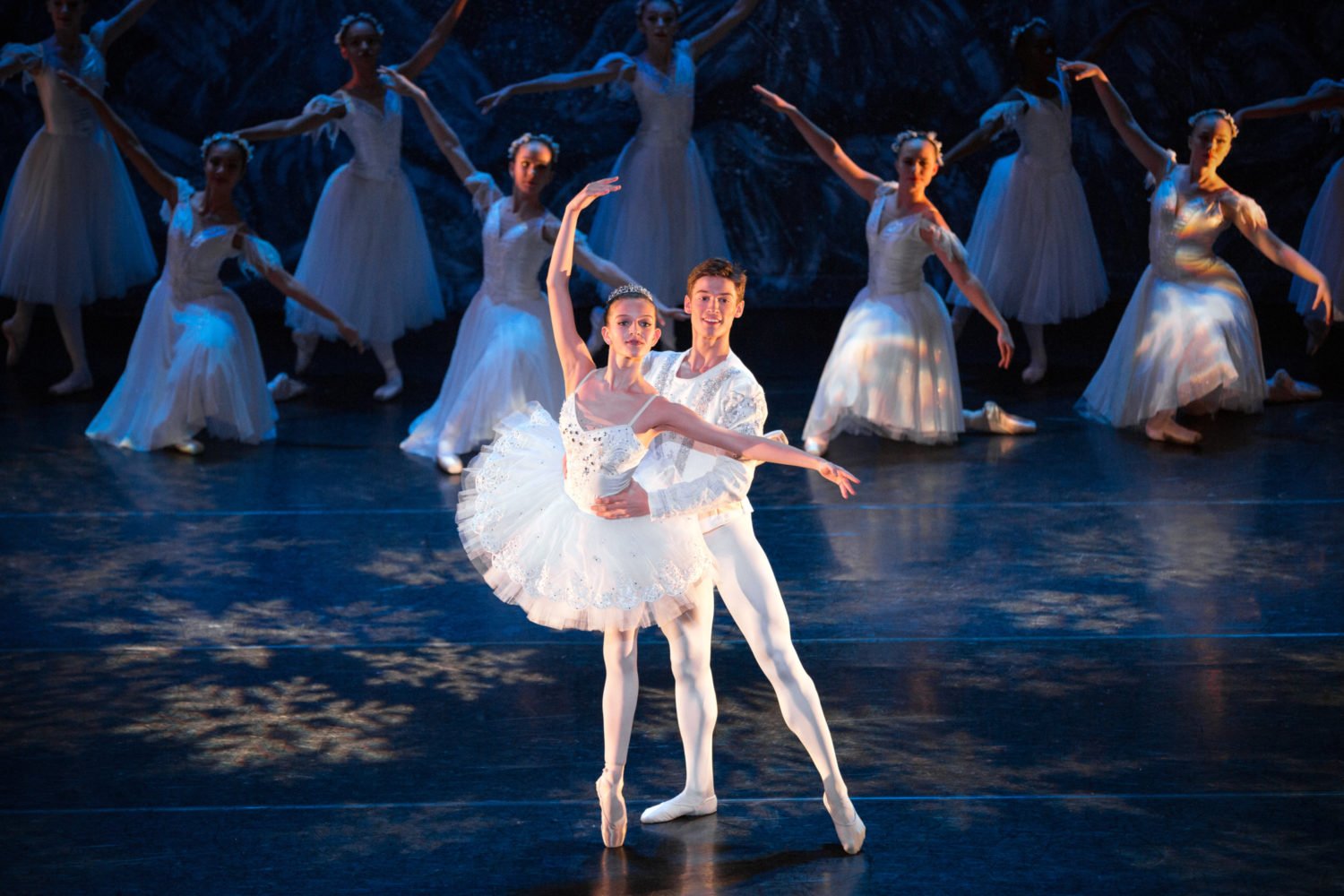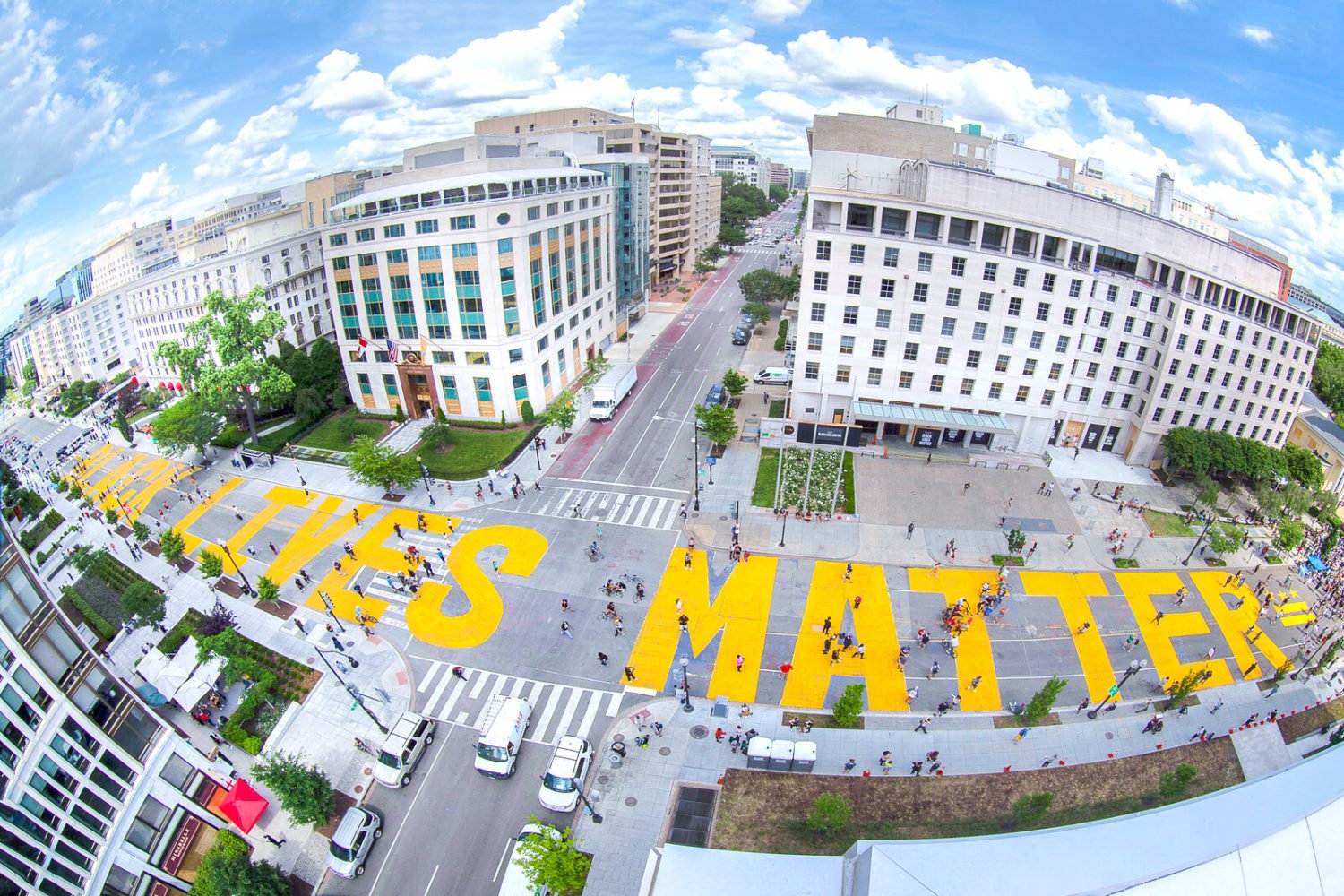A ballerina, by definition, does not speak—at least not with words. The body is her language, and she spends her life mastering its vocabulary, usually at others’ direction: a casting list on the wall, a choreographer’s instructions, a critic’s review. For dancers of color, this fact has been doubly true.
But last year, after a Minneapolis police officer murdered George Floyd, and organizations across the professional spectrum were called out by people of color for furthering systemic racism, the overwhelmingly white world of ballet wasn’t spared. One of the most influential voices in that conversation was a dancer with the Washington Ballet, 27-year-old Nardia Boodoo.
You may have seen her onstage, one of the company’s five Black dancers, or in the pages of Marie Claire—she’s a model repped by Wilhelmina who has starred in campaigns for Tory Burch, Chanel Beauty, and Nike. She began dancing only 13 years ago, but Boodoo, whose roots are Indo-Trinidadian, has soared into the pantheon of ballet celebrities, the object of teen worship and the subject of fan art (plus at least one look-alike doll).
What was never visible was the racism she endured on the way up. “Despite the fact that I work hard in rehearsal, throw myself into my art form and perform on international stages,” as she put it on Instagram on May 31, 2020, “when I return home”—to Bethesda—”I’m still most likely to be questioned and harassed for walking my dog late at night in an affluent area…that I reside in.”
This month, Boodoo appears in one of the Washington Ballet’s latest productions, choreographed by the renowned Black dancer Silas Farely. Yet some of her most important recent work has occurred behind the scenes over the past year as she pushed the company to own ballet’s history of prejudice and its responsibility to change. “She’s just been a really, really important voice in helping us to galvanize and discuss all very important issues,” says Julie Kent, the company’s artistic director, issues that “haven’t really been addressed previously, and not just at the Washington Ballet but in ballet as an art form.”
When Boodoo started training at 14, Misty Copeland was making history as American Ballet Theatre’s first Black soloist in two decades, following trailblazing Black ballerinas such as Lauren Anderson and Raven Wilkinson. Boodoo’s peers at the Baltimore School for the Arts, meanwhile, were majority-African American, a “strong base,” she says, for a young artist of color. Boodoo earned a scholarship to Chicago’s Joffrey Ballet, then landed a coveted sport in the Washington Ballet’s studio company while still a teenager.
Leaving home, though, occasioned her first experiences with racial bias in ballet. “I’ve had someone who holds power say to me, ‘Well, because you stick out so much in the corps, you have to work so much harder, because everyone’s going to be looking at you,'” she says. “That’s not my fault that you only have one Black girl in the corps.”
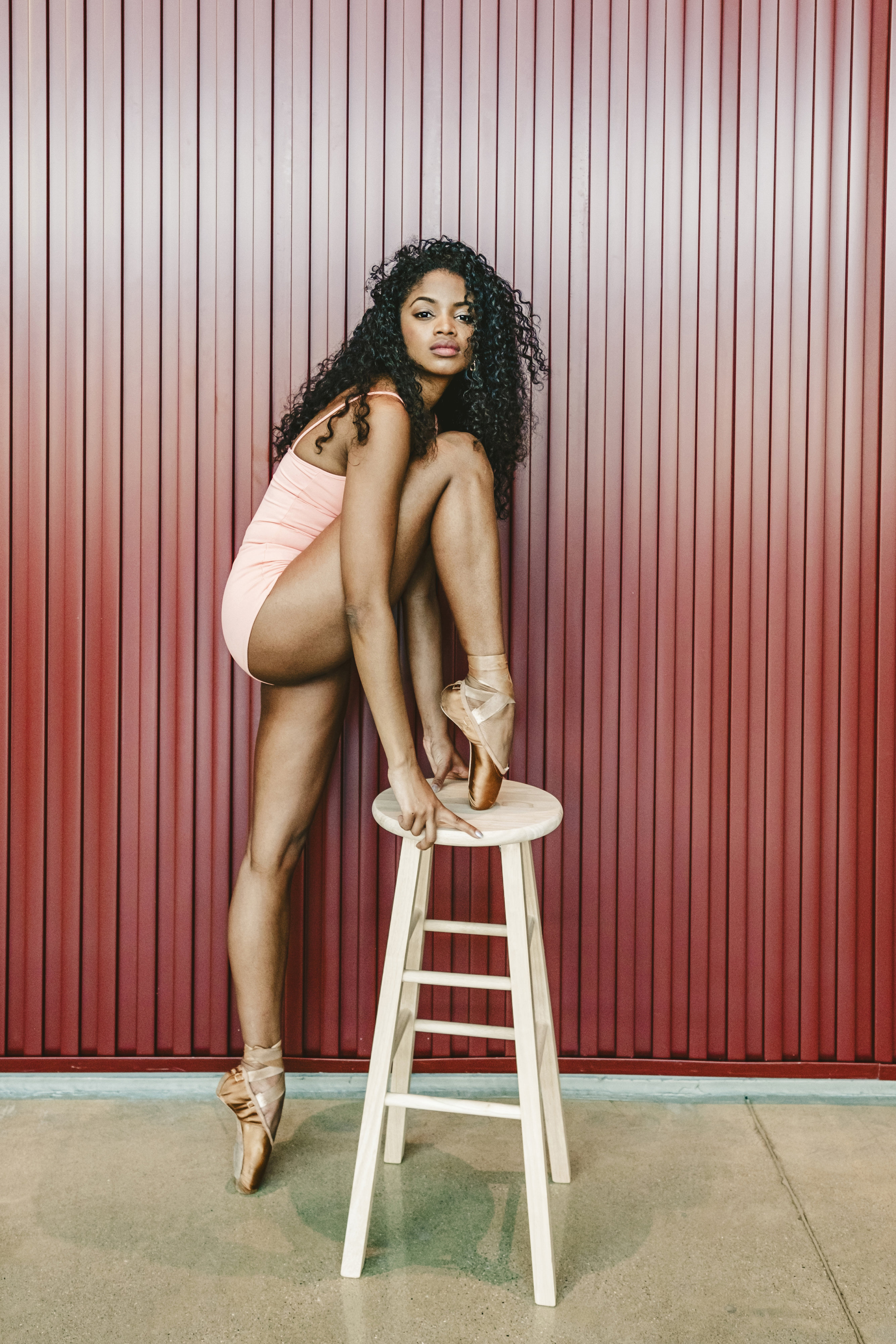
It was the classic conundrum of a second generation. She wasn’t the one who broke down the door. But she still had to contend with an environment that was less than welcoming. And the pressure to fit a stereotype needled her. Virtually every professional Black dancer feels it: having to straighten curly hair, receiving costumes with mesh that doesn’t match their skin tone, wearing the pink tights that make light-skinned dancers look lithe but appear to chop inches off those with darker complexions. Sometimes Boodoo’s colleagues would make hurtful comments. “Stupid things,” she recalls, “like ‘Your hair smells like Black-girl hair.'”
Rachael Parini, a friend and the only other Black dancer when Boodoo joined the company, remembers when they were asked to wear white powder in Giselle, a tradition in the ballet but a loaded proposition for Black performers. At a rehearsal, the stager hollered over the loudspeaker: “Rachael and Nardia, why are you blue?” The powder apparently had turned their brown skin another hue under the cool stage lights.
Parini describes her friend as a force—”not one to back down from a fight.” But back then, the women endured the routine microaggression quietly. For all its glamour, a ballet company is a workplace like any other, governed by hierarchies and unwritten social codes. With one big difference: There’s usually no formal human-resources department. “You sort of get this vibe that this is how it is,” says Boodoo. “The more subservient you are…the better and the more instruction you’ll receive…the further your career will go on.”
After starting to model, Boodoo met a photographer who was perplexed by her acquiescence. He described how the New York dancers he knew were much more assertive. It was a revelation: Boodoo’s confidence and following grew. She became an apprentice at the Pennsylvania Ballet, then returned to DC, becoming a full company member in 2019.
By the time the country was protesting for racial justice and dancers of color began organizing over Zoom, she was ready to speak out. “To all the dancers that don’t feel supported by their companies,” she posted to Instagram on June 1, 2020, “I think it’s time to make some changes and to hold them accountable.” Andrea Long-Naidu, a former New York ballet star and a past teacher of Boodoo’s, looked on with pride: “When I had her at Dance Theatre of Harlem, she wasn’t aware of her powers yet.”
Seeing her staff in pain after George Floyd’s Killing, Kent convened an all-company Zoom. Voice cracking, Boodoo recounted her experiences, explaining that the bias often presented itself as overtly as it did implicitly: The problem wasn’t simply getting passed over for a role but also being told her face looked “too ethnic” for the part.
Kent, who is white, listened on the other side of the screen, distinctly aware of the vulnerability on display among her dancers. A former principal dancer with American Ballet Theatre, she performed on global stages and had a part in the beloved 2000 movie Center Stage. “I have a unique role and responsibility in order to move [the art form] forward,” she says, “and allow for the kind of career and love that I had to be possible for as many people as possible.”
Kent inherited one of the country’s most diverse companies from her predecessor, Septime Webre, who had recruited worldwide and electrified the institution’s cultural cachet. She had added 16 dancers to the corps, almost half of whom identify as BIPOC—and now they were hurting. There’s also the matter of competition. The Ballet has to compete with bigger acts imported by the Kennedy Center. In some ways, its relevance hinges on broadening ballet’s historically older, white audience with admirers whose woke-ness won’t tolerate notions of “diversity” that predate Black Lives Matter—or that feel performative.
I’ve had someone who holds power say to me, ‘Well, because you stick out so much in the corps, you have to work so much harder.’ That’s not my fault that you only have one Black girl in the corps.
Kent formed a working group with members from every department to tackle issues of inclusion and equity, and an outside consultant has been guiding their monthly meetings and homework. Boodoo, who represents the performers along with Oscar Sanchez, a Cuban dancer, had expected pushback. But her fan base and platform—a social-media audience that, at nearly 50,000 on Instagram, is within striking distance of some top New York ballerinas’—would have been tough for the company to ignore.
As wider discussions started, though, it became clear that white privilege was a new concept to some. Boodoo was dismayed that some colleagues were unfamiliar with certain civil-rights leaders, so she helped organize a remote study of the book The New Jim Crow. To prod management, she and fellow colleagues of color met privately to hash out ideas for the company at large. It’s been exhausting to divide her energy between institutional matters and the rigors of performing: “You want to just focus on your art form, you just want to focus on being beautiful, being a strong dancer, and contributing to the task at hand.”
Partly because of Covid limits on gatherings and partly because they had to start with building a shared vocabulary, the working group’s progress has felt slow. But they’re in the process of finalizing recommendations to address the places where inequity creeps in. Money, donors, time, and institutional commitment, meanwhile, all could limit their progress. The group, for instance, envisions a Nutcracker free of racist tropes—in particular, the traditional Arabian and Chinese dances, which play up offensive cultural stereotypes. But ticket sales help fund the annual budget. Will the public support changes to the beloved show? Can the company handle that financial risk?
The stakes—Black dancers continually being overlooked or leaving ballet—feel higher now that the work has begun. Still, Boodoo says she feels hopeful that the company will evolve. “She’ll be someone,” says Long-Naidu, “that’ll go down in the history books of Black ballerinas.” An artist who championed a new act for the ballet, or at least one who tried.
This article appears in the June 2021 issue.
